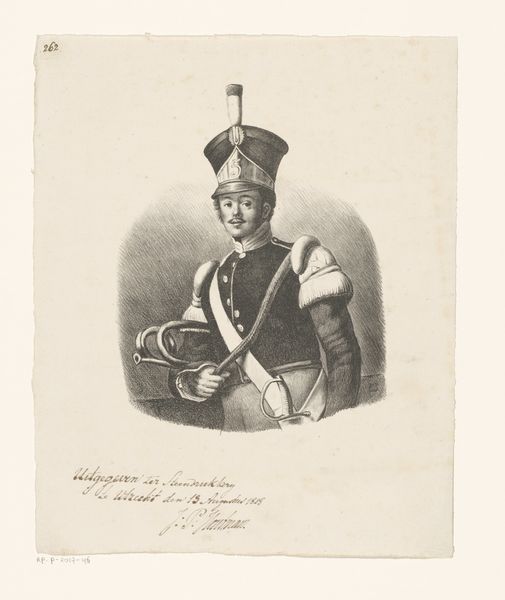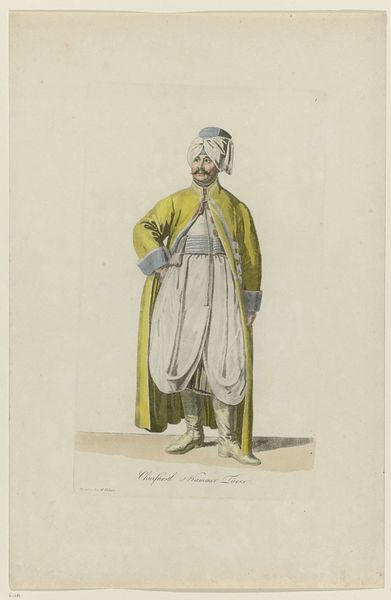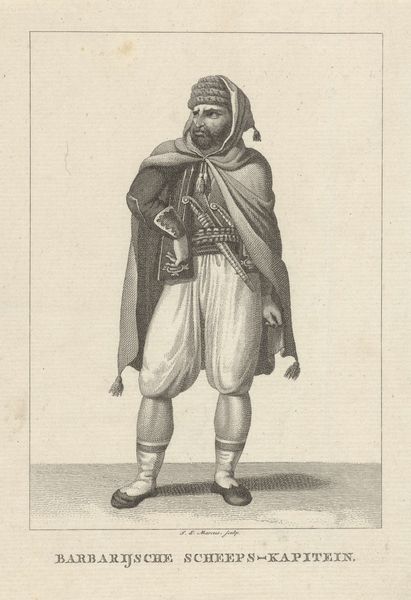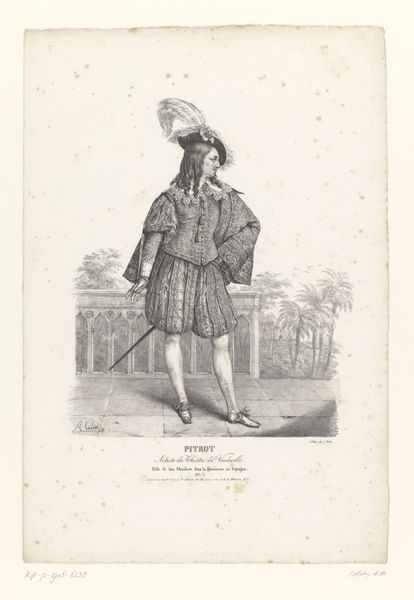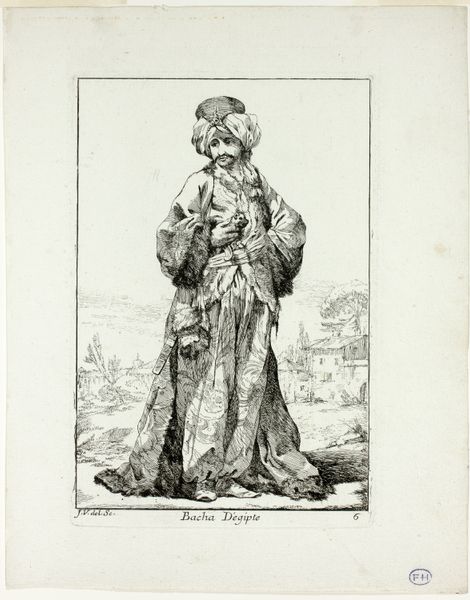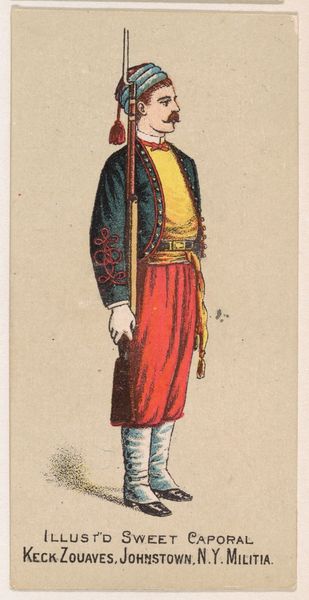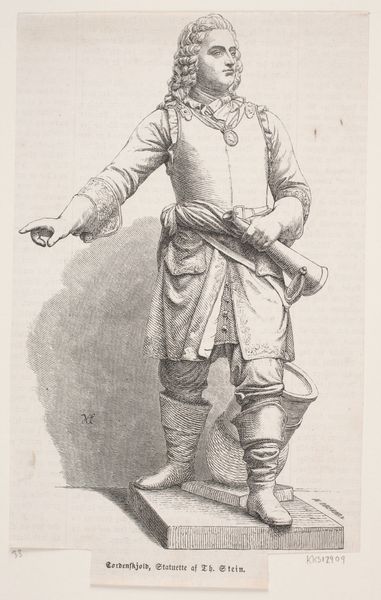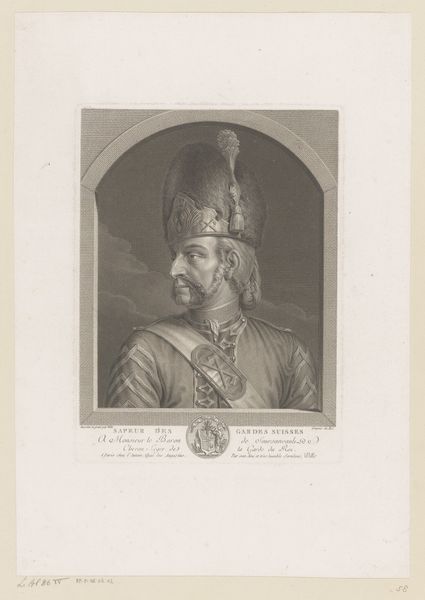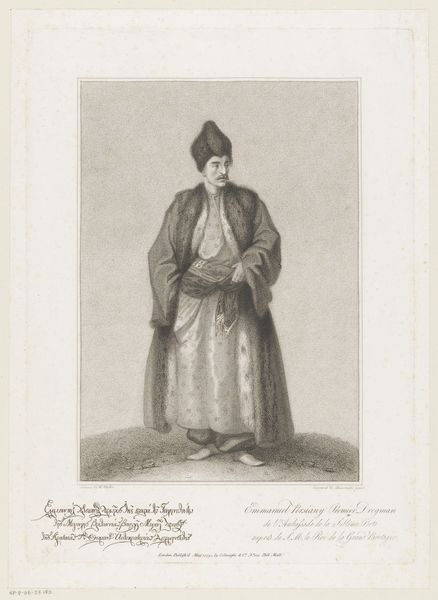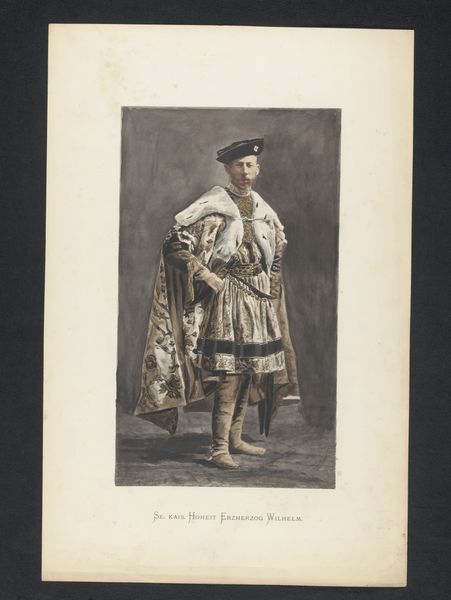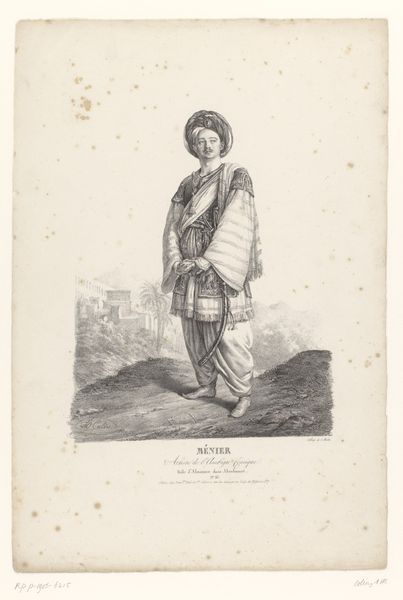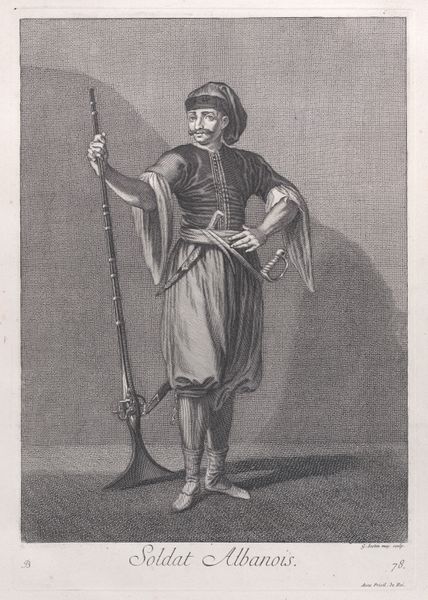
Portret van Jean d'Audeville Frésnoy als Menzicoff in de tragedie La famille de Menzicoff 1823
0:00
0:00
print, engraving
#
portrait
# print
#
figuration
#
romanticism
#
line
#
history-painting
#
engraving
Dimensions: height 423 mm, width 287 mm
Copyright: Rijks Museum: Open Domain
Curator: This is an engraving from 1823 by Alexandre-Marie Colin, titled "Portret van Jean d'Audeville Frésnoy als Menzicoff in de tragedie La famille de Menzicoff." Editor: My initial impression is one of muted grandeur. The limited tonal range creates a sense of distance, almost like peering through time itself, but there’s an undeniable opulence in the details of the figure's attire. Curator: Absolutely, the details of the clothing certainly communicate the high status that the subject holds, doesn't it? The rendering of fabric and texture using only lines speaks to the artist’s skillful control over the engraving process. More than that, the specific reference to a stage production infuses it with theatrical and perhaps psychological tension, where identity is being actively performed. Editor: You raise a fascinating point about performance and the artist's choices, like that costume he is wearing. Look at the fur trim. Someone painstakingly sewed that. And consider the layers, the fabrics… silk? Velvet? It really highlights the skill of the textile artisans involved and, by extension, the wealth required for such finery. How was the production structured that would give the figure enough cultural currency to demand rendering through printing? Curator: This choice of character is highly symbolic. Menzicoff, a man who rose from humble beginnings to great power only to fall from grace again. As a Romantic artwork, the tragic story resonates with larger narratives of fate, ambition, and human fallibility that would've really caught on during that time. Editor: It also really places the process of producing images within economic and social networks. This image facilitated both visibility for the performance and wider access to artistic representation to individuals across many social classes. The symbolic import can be appreciated through material means of its distribution. Curator: I hadn’t quite considered the accessibility afforded by printed imagery. It allows those not present in the theater, to see themselves reflected in that tragedy, the emotions echoing. Editor: I find it revealing how closely considering materiality can deepen one's appreciation for even the most seemingly straightforward representation. The process makes space to account for people that art history regularly ignores.
Comments
No comments
Be the first to comment and join the conversation on the ultimate creative platform.
